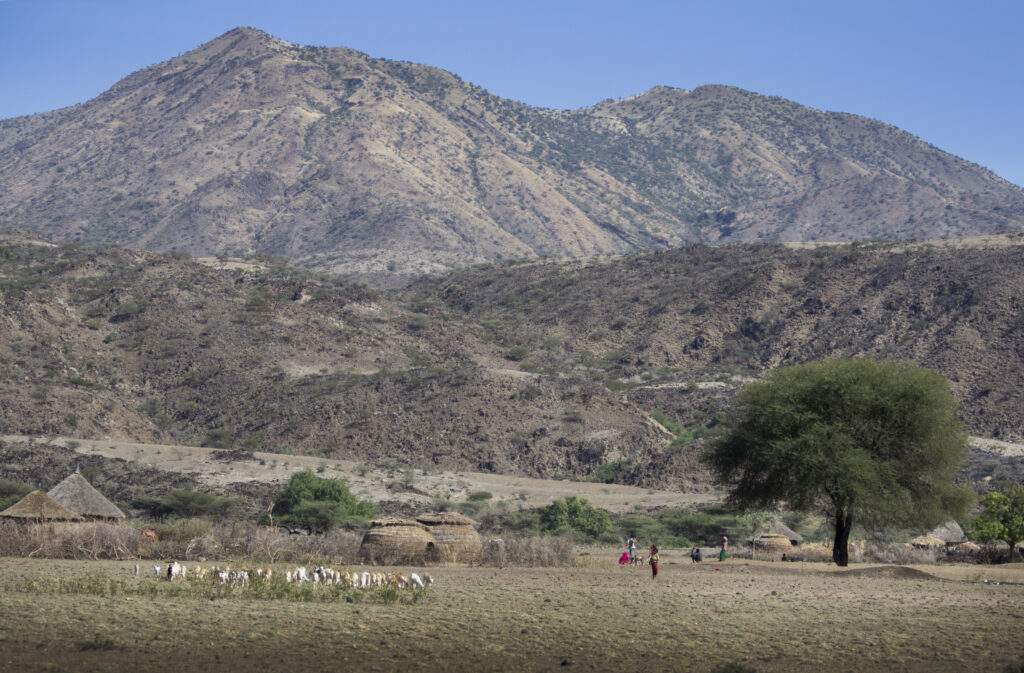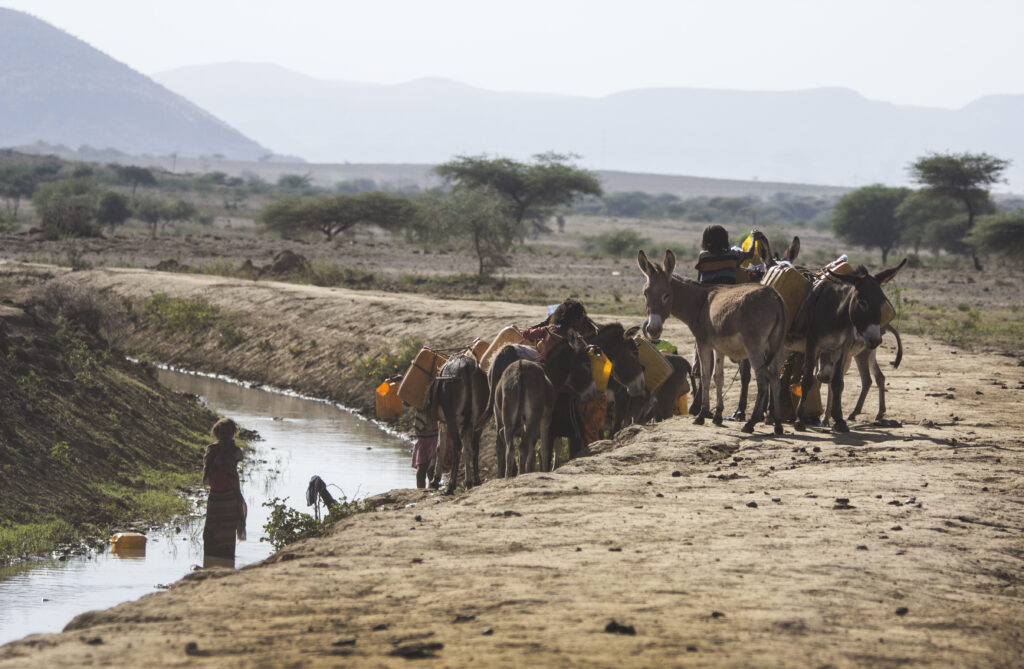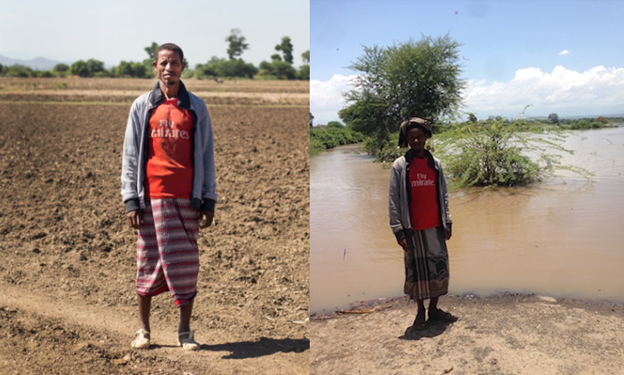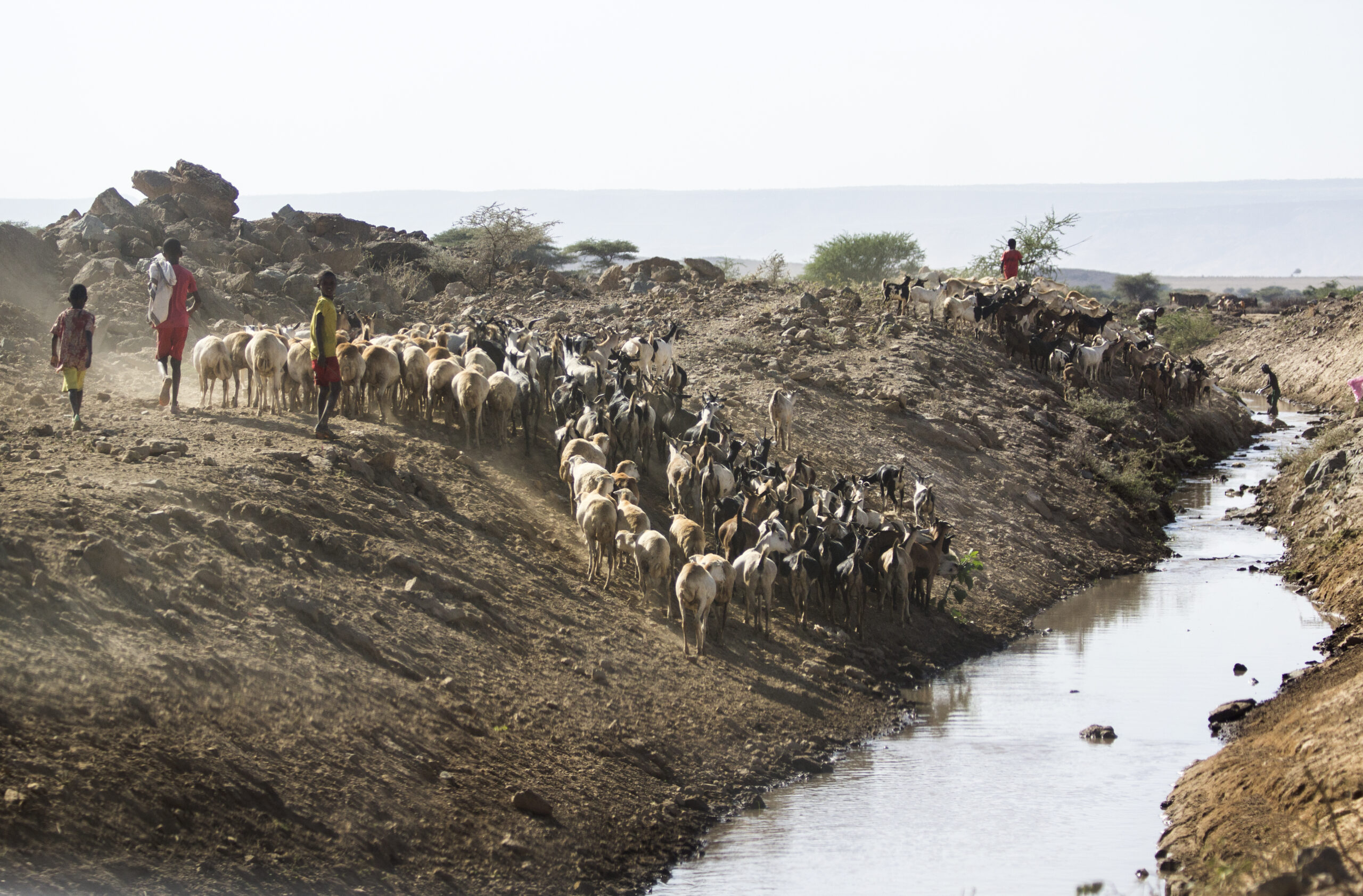Catherine Grasham and Alice Chautard, University of Oxford
Water, climate and poverty are intimately interwoven in Ethiopia, one of the poorest and most water insecure countries in the world. Communities affected by poverty struggle to access safe and reliable water, and to adapt to climate-related challenges. According to the latest WHO and UNICEF JMP report, only 5% of the rural population in Ethiopia has access to safely managed water – compared to 39% in urban areas. Given these stark statistics: what does climate change mean for communities who are water insecure?
The climate-related risks that people experience are far from being uniform. We know that people’s lives are vitally connected to and shaped by water. Yet how, when, where and for what they use and access water varies. This is shaped in large part by their own capacities, by their economic and social situations and by the specific locations they live in. Even within one small district, such as Fentale (home to 110,000 people) there is a considerable amount of variation in socio-economic status, water resources, infrastructure, and water-related risks (floods and droughts). This means that policies and investments in water security should understand these variations and be targeted accordingly.
In this blog, I feature two rural sub-disctricts within Fentale based on Dr Catherine Grasham’s research: Haro Kersa, a remote sub-district heavily affected by drought and water scarcity, and Gola, a sub-district that lies on the bank of the Awash River and is vulnerable to flooding.
Haro Kersa

In Haro Kersa most people are agro-pastoralists, meaning that they tend (in this case, rainfed) farms and own large herds of animals. In the wet season, some years the rain is kind and crops flourish; in others, the crops fail due to drought.
In the long dry season, most of the community migrate north to the banks of a major tributary of the Awash River. This allows access to pasture for livestock and water for the animals and themselves. Children in school stay behind in the main village in the Southern part of the district, typically with their grandmothers. For those, water access is a daily struggle. Without investment in rural water security, these difficulties will likely intensify with climate change.
Women and girls are usually responsible for securing household water in Ethiopia. In the dry season, it can be a 10-hour round trip on foot to collect water – when local water supply infrastructure fails, there is no rain and water from other sources is too expensive. Changing rain patterns, worsened by climate change, will have negative implications for those responsible for collecting water.

The issue of children’s education has generally been missing from the conversations around climate change impacts. With drought years predicted to increase in the future, the long-term impacts of missed children’s education will likely worsen.
In addition to negative education impacts, rural communities face daily burdens during drought years including loss of income, food insecurity, physical health impacts, emotional turmoil and an increased workload.
Gola
Gola is a rural sub-district (kebele) of Fentale that sits close to Metehara town, Lake Beseka and the Awash River. People living in Gola rely on irrigated and rainfed agriculture and small numbers of animals for their income.
Many of the farming crops in Gola are located on the banks of the Awash river. This means farmers can irrigate their crops, earning more money from their land than farmers who rely on rainfed agriculture. However, this also makes them prone to unanticipated flooding events which are becoming more frequent due to climate change.
Typically, farms flood in the wet season every year, depositing beneficial nutrients to the soil. Some years the farm will flood unexpectedly in a different month, destroying crops.

In 2017, floods took away 57 boxes of tomatoes one farmer, Muhammad Asabot, had just harvested – his hard-earned labour vanishing in an instant. “Worrying about the floods keeps us awake at night”, he says. At the same time, he has seen the climate become hotter and drier, with the summer rains – vital for rainfed agriculture – becoming shorter and less regular.
Conclusion
Climate change is not just – those who contribute the least to climate change are likely to be impacted the most. Communities in Haro Kersa and Gola are living on the front line, adapting to the variable and changing climate as best they can, severely limited by poverty.
These stories need to be told and shared. At the same time, it is important that we – as a society – carefully consider who is telling them and how they are told. These reflections led Dr. Catherine Grasham and I, to develop a follow-up project, working with Ethiopian photographer Martha Tadesse to develop a participatory photography project in Fentale. The project consists in providing cameras to men and women in Haro Kersa and Gola and letting them capture images of what water (in)security and climate change means to them. Through their eyes and words, we hope to gain a better understanding of our original question: what does climate change mean for communities who are water insecure?

